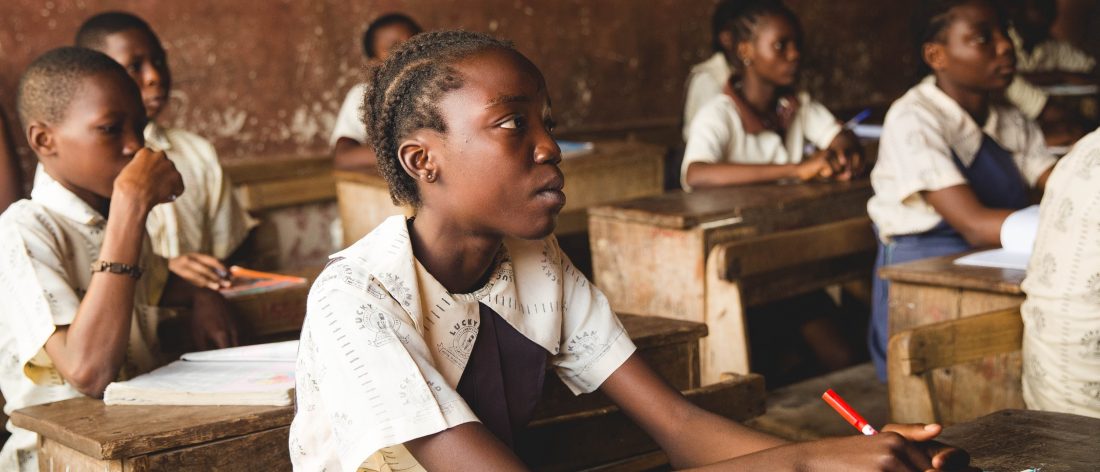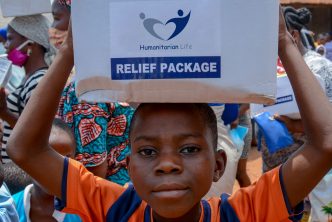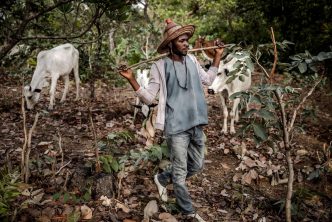Sustainable Environment and Infrastructure Development
By Dr. Oarhe Osumah
When the Sustainable Development Goals (SDGs) were unveiled in 2015 at the 70th session of the United Nations General Assembly, they were widely lauded. Built on a transformative promise of leaving no one behind, the SDGs were widely considered as the most robust and inclusive set of goals ever-designed for global development. In 2019, the SDGs Index and Dashboard report for Africa indicated that, in varying scales, regions were making progress. Individual countries recorded different levels of success on each of the 17 goals. On account of the report, states track their performance rating on achieving the SDGs. The flurry of activities is announced by the individual countries based on their positions to re-calibrate. The present decade started in 2020, as the Decade of Action, with calls to turbo-charge the race to the finish line, 2030. Subsequently, the COVID-19 pandemic happened. With it, there have been ricochet effects that threaten the attainment of the SDGs by 2030. This essay examines how the COVID-19 pandemic foretells significant threats to the SDGs’ attainment concerning the sustainable environment and infrastructure development in cities and communities. It also draws up a roadmap for action in Nigeria.
Pre-COVID Performance Scorecard
Pre-COVID-19 pandemic, according to the Global Social progress Index report, Nigeria scored 49.20 and ranked 121st out of 149 countries in achieving the SDGs. By this performance scorecard, Nigeria fell within the range of a developing country, even though it aspires to become a middle-income country. At the continental level, according to the 2019 Africa SDG Index and Dashboard report, Nigeria scored 47.03 and ranked 43rd out of African 52 countries. These scorecards and rankings indicate Nigeria has much to do, at the global and continental levels, to achieve the SDGs by 2030. From a comparative prism, Nigeria performed worse than African countries with comparable economies, such as Algeria, Morocco, Egypt, South Africa, and Kenya. It also performed worse than African countries with similar security challenges and protracted conflicts like Mali, Cameroun, Niger, and Sudan. Instructively, Nigeria’s performance scales vary on each goal.
Impending Doom and Gloom
Considering SDG’s goal 6, “Clean Water and Sanitation,” pre-COVID-19, 66.9 percent of households in Nigeria had no access to clean water sources, and only 33 percent have access to sanitation. Significantly, access to clean water and sanitation varies across the 36 states and between rural and urban settlements within each of the states. Based on World Bank estimates, Nigeria needs to triple its budget or allocate at least 1.7 percent of the current Gross Domestic Product (GDP) to Water, Sanitation, and Hygiene. The ambition is highest for rural sanitation, where the gap for improved services is 64.1 percent. This action requires extraordinary efforts to meet. With inadequate funding for the provision of clean water and significant household efforts needed to eliminate open defecation despite low family incomes, access to clean water and sanitation by 2030 will be significantly derailed. The outbreak of COVID-19 has reemphasized the importance of clean water and sanitation facilities
Similarly, amid COVID-19, the attainment of Goal 7, Renewable Energy by 2030 in Nigeria, as in many African countries, will be immeasurably undermined. Pre-COVID-19, energy infrastructure in Nigeria was still in infancy. For example, 43 percent of the Nigerian population, representing an estimated 88 million people, had no access to the national power grid. Also, 176 million Nigerians had no access to clean cooking fuels or technologies. The situation will worsen with border closure and quarantine measures, which affect the importation of renewable energy components and gadgets. China, the most significant source and leading supplier for renewable energy infrastructural facilities to Nigeria (Powanga and Reich, 2019), is where the virus was first confirmed and spread worldwide. As part of the restrictive measures to curb the virus, several companies in China have been shut down. Such actions will disrupt the renewable energy supply chain, and there will be rebounding effects for access to renewable energy in the country.
Also, achieving Goal 9, Industry, Innovation, and Infrastructure in the pandemic era, by 2030, will be far-flung in Nigeria. With the combined vibrant population and socio-economic institutions, cities are reference points in industry, innovation, and infrastructure. However, the cities were the first to be affected and have continued to suffer the virus’ vast spread. Many small and medium business enterprises in the towns collapsed due to the lockdown occasioned by the pandemic. Some transformative innovations adopted in response to the pandemic, such as e-learning, raised fundamental questions concerning structural imbalance and inequalities. With only a few people with internet access, the SDGs doctrine of leaving no one behind will be derailed.
Furthermore, the COVID-19 pandemic portends a fatal threat to achieving Goal 11, Sustainable Cities and Communities. Over half of the population resides in the dense formal and informal settlements and neighbourhoods, in cities and communities. This situation will bode a high risk of disaster in this pandemic era. Also, COVID-19 induced lockdown measures; the closure of schools, public space, tourist sites, and related income has profoundly impacted cities and communities. According to Proshare economy, travel into Nigeria reduced by 3.5 million, resulting in a revenue loss of $ 0.7 billion with the risk of 91,380 jobs lost and $0.6 billion, contributing to Nigeria’s GDP. Again, sexual assaults rose as lockdowns froze men out of work and trapped women and girls indoors. Nigerian police reported 717 rape cases between January and May 2020, a dramatic increase over the same period in 2019. This situation sparked off demonstrations by many gender groups. It also occasioned outpourings of outrage by prominent figures, including President Muhammadu Buhari, state governors, and members of the National Assembly (Osumah, 2020).
As pertains to Goal 13 – Climate Action,SDGs Index and Dashboard report for Africa pre-COVID-19 indicated that African countries, including Nigeria, due to interventions, performed well comparatively across the board in terms of climate action than in other goals. Similarly, efforts to curb the COVID-19 pandemic resulted in reduced industrial carbon dioxide emission and human mobility. As a corollary, there has been reduced pollution and improved quality of air. However, it is believed that when industrial activity and human mobility expand, there will be a reversal of these modest improvements. According to the UN Secretary-General Antonio Guterres, reduced carbon dioxide emission linked to the economic recession is temporary. Simultaneously, climate change determinants such as drought, wildfires, floods, and extreme storms remain for a long time.
Roadmap for More Glowing Accounts
Given the potential and real threats of the COVID-19 pandemic to the prospect of achieving the SDGs, the following policy measures are imperative.
- Investment in Critical Infrastructure: As Nigeria battles with the COVID-19 pandemic, beyond the health sector, it is imperative to also pay adequate attention to investment and operational needs in critical infrastructure for clean water and sanitation, renewable energy, industry, and housing. Infrastructural facilities in place should be maintained and not allowed to fall to rot.
- Integration of SDG into National Development programmes: The SDGs should be integrated into governance traditions, budgets, development programmes, and government plans at various levels – local, state, and national. Botswana is taking the approach of integration for the attainment of specific SDG targets. Nigeria should follow suit.
- Stakeholders Involvement: Apart from the government, other relevant stakeholders, including youth, grassroots organisations, private sector, civil society organisations, and development partners within the limit of their capacity, should be involved in enactment, execution, evaluation, and monitoring of discussions and activities for achieving the SDGs. Experience from the Caribbean and Israel suggests relevant stakeholders’ involvement in shaping a shared vision, a practice Nigeria should adopt.
- Policy for enabling environment: Establishing national mechanisms for achieving the SDGs should be anchored on knowledge derived from rigorous research rather than narrow considerations. This mechanism will help to obviate the effects of the knowledge gap in their implementation. Scholars and policy entrepreneurs should aid in formulating government policies and programmes for achieving the SDGs to achieve this task. In Israel, activities on achieving each SDG are anchored on a Voluntary National Review. Nigeria should adopt this model.
Conclusion
The prospect of Nigeria achieving the SDGs by 2030 with respect to a sustainable environment and infrastructural development has been made more untenable by the COVID-19 pandemic. To be able to accomplish this goal, specific policy measures are imperative. These must include investment in critical infrastructure, integration of the SDGs into national development plans and programmes, stakeholder engagement, and a policy framework for an enabling environment.







